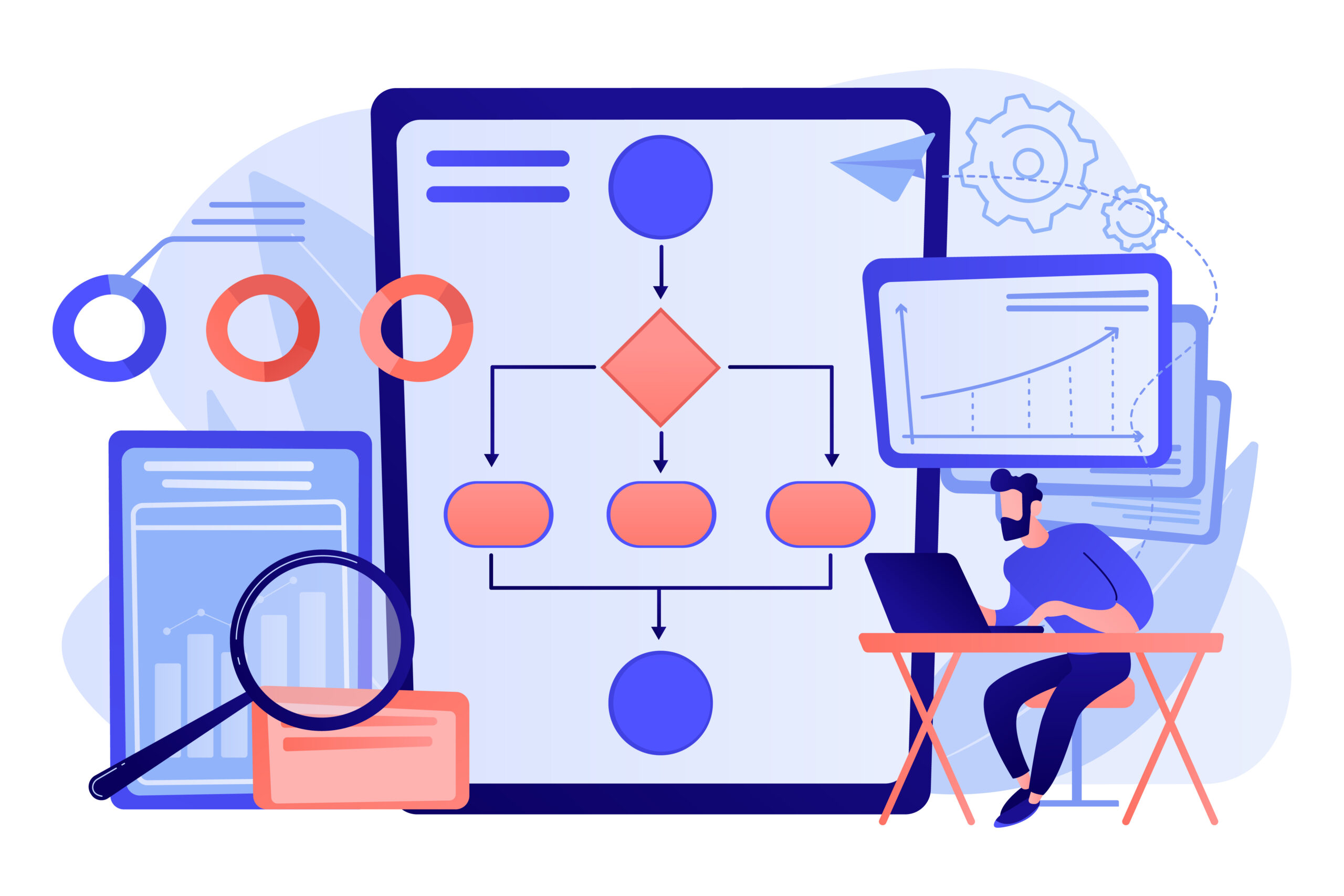Approval workflows can be complicated, time-consuming, and frustrating for both the approvers and requesters. But, with automation, you can change that. In this blog, we will dive deep into the basics of approval process workflow and how automating it can benefit your organization. We’ll cover the steps to create an effective approval process workflow, including defining objectives and identifying key players in the process. We’ll also discuss how to set up and customize your approval process workflow, including configuring approval settings, designing approval steps, and setting up final actions.
Additionally, we’ll explore different automation tools and techniques that can improve the efficiency of your approval process workflow. Lastly, we’ll provide tips to automate approval workflow and overcome common challenges. Let’s get started on building a better approval process experience for everyone involved!
Understanding the Basics of Approval Workflow

Automating approval processes in Salesforce is essential for streamlining your workflow and saving time. Workflows play a crucial role in the approval process, allowing you to define and automate the steps required for approvals. By automating this process, you can improve efficiency and ensure consistent decision-making.
There are several benefits to automating approval workflows. Firstly, it eliminates manual processing, reducing the chances of errors and delays. Secondly, it enables you to configure email notifications to keep all stakeholders informed about the status of the approval process. This ensures transparency and facilitates timely decision-making.
When setting up an approval process, you have various approval actions at your disposal. These actions can include final rejection actions, such as sending an email notification to the requester, or final approval actions, such as updating a field on the record. By leveraging these actions, you can customize the approval process to meet your organization’s unique needs.
To configure email notifications, you can use the quick find box in Salesforce to navigate to the approval process setup page. From there, you can specify the email address(es) to which notifications should be sent. Additionally, you can customize the email template and include merge fields to provide relevant information to the approver.
In the next section, we will discuss the steps to create an effective approval process workflow. Stay tuned!
Why Automate an Approval Process Workflow?
Benefits of automating an approval process workflow include ensuring consistency, streamlining the process for faster decision-making, improving transparency by tracking request status, increasing productivity by eliminating paper-based approvals, and enhancing collaboration between approvers and submitters.
Related Article: Contract Negotiation: Proven Strategies For Collaboration
Steps to Create an Effective Approval Workflow

To create an effective approval workflow, you need to follow a series of steps. First, clearly define your objectives for the approval process. This will help you determine what outcomes you want to achieve and the purpose of the workflow. Next, identify the key players involved in the approval process. These individuals will be responsible for reviewing and making decisions on the requests. Once you have identified the key players, you need to determine the entry criteria for triggering the approval process. This could be based on certain conditions or specific data points. After that, design the approval steps and their sequence. This involves determining the order in which the requests will be reviewed and approved.
Finally, set up final actions for approved or rejected requests. This could include sending notifications, updating records, or taking other necessary actions. By following these steps, you can create an efficient and effective approval process workflow that meets your business needs.
Defining Your Approval Process Objectives
To ensure a successful approval process, it’s important to define clear objectives and goals. Begin by clarifying the purpose of the process and identifying the desired outcomes. Consider the benefits you expect to achieve through automation, such as improved efficiency and reduced manual effort. Align the approval process with your business logic to ensure it reflects your unique needs and requirements.
When defining your approval process objectives, it’s crucial to consider the parameters for approval. This may include budget limits, time constraints, or other specific criteria that need to be met. By clearly defining these parameters, you can streamline the decision-making process and avoid unnecessary delays.
Additionally, it’s important to establish success criteria that will allow you to evaluate the effectiveness of the approval process. This could include metrics such as the number of approvals completed within a certain timeframe or the reduction in approval time. By setting clear goals and objectives, you can ensure that your approval process is designed to meet the needs of your organization and drive positive outcomes.
Identifying Key Players in the Approval Process
To successfully automate an approval process workflow, it is crucial to identify the key players involved in the process. This involves understanding the roles and responsibilities of the different stakeholders. By determining who can initiate and submit approval requests, you can establish a clear chain of command. Defining the approvers and their hierarchy ensures that the right individuals are responsible for reviewing and granting approvals. In some cases, involving additional stakeholders for specific scenarios may be necessary to ensure comprehensive decision-making. Clear communication channels between all parties involved are essential to facilitate smooth collaboration and minimize delays. By identifying the key players in the approval process, you can streamline the workflow and ensure efficient decision-making.
How to Set Up your Approval Workflow?

First, access the approval process setup in Salesforce to set up and customize your approval process workflow. Then, configure the approval settings according to your requirements. Design the approval steps based on your business needs and define the actions to be taken upon final approval or rejection. Finally, customize email alerts and notifications for better communication.
Configuring the Approval Settings
Access the approval process settings through the navigation menu to configure the approval settings in Salesforce. In the approval process settings, define a unique name for the process and a corresponding unique identifier. This will help you easily identify and manage approval processes within your org.
Next, specify the approval actions that are available for each step in the process. You can choose from options such as approve, reject, or reassign. By setting up these actions, you determine how the approval requests and notifications will be handled.
Additionally, you can set up email templates for approval requests and notifications. This allows you to customize the content of these emails, including the email address it will be sent from and any additional information or instructions you want to include.
To ensure a user-friendly experience, determine the approval page layout. This includes deciding on the fields, picklists, and checkboxes that will be displayed on the approval page. You can also set defaults for certain fields to streamline the approval process.
By configuring the approval settings, you can create an efficient and tailored approval process workflow in Salesforce, enhancing the overall user experience and productivity.
Designing Approval Steps
In designing the approval steps, it is important to create distinct and well-defined stages for the process. Each step should have its criteria, such as specific field updates or record changes, that need to be met for the approval to progress. Configuring the order of the approval steps is crucial to ensure a smooth and logical flow. Additionally, defining the necessary approval actions at each step will determine what needs to be done to move forward or make decisions. Customizing email notifications for each approval step can help keep all parties involved informed throughout the process. By following these steps, you can create an efficient and effective approval process workflow.
Setting up Final Actions
To set up final actions for your approval process, you need to determine the actions that will be taken upon final approval. Specify the field updates or record changes that should occur when a request is approved. You can also configure email alerts to notify stakeholders about the final approval, ensuring that everyone is informed and can take appropriate action. Additionally, it’s important to define the actions for rejected requests. This may include sending notifications or updating records accordingly. When setting up the final actions, make sure they align with your business requirements and follow a logical workflow. By carefully configuring these final actions, you can ensure a smooth and efficient approval process that meets your organization’s needs.
Related Article: Importance Of Contracts: Why Do Contracts Matter?
Automate Approval Workflow Process – Tools and Techniques
Automating the approval process can significantly enhance the efficiency and accuracy of your workflow. To achieve this, you can explore various automation tools such as SharePoint or custom-built solutions that are designed specifically for managing approval processes. These tools provide intuitive interfaces and features that simplify the implementation and management of automated workflows. Additionally, integrating these tools with other systems, such as your organization’s email system or CRM software, can ensure a seamless flow of information and streamline the overall workflow.
When automating the approval process, it’s essential to understand how user fields and parameters can be utilized to enhance automation. By defining unique names for fields and utilizing picklists, checkboxes, and default values, you can create a structured and efficient approval process. This allows for easy identification and filtering of approval requests, making it easier for approvers to navigate and manage their workload.
To get started with automating the approval process, you can follow a step-by-step tutorial that outlines the necessary configuration steps. Leveraging the standard setup wizard provided by automation tools can expedite the process, ensuring quick and efficient configuration without the need for extensive coding or technical expertise.
By adopting automation tools and techniques for your approval process, you can streamline the workflow, reduce manual errors, and improve overall productivity. In the next section, we will explore how automation tools can improve the efficiency of the approval process workflow.
Can Automation Tools Improve the Efficiency of Approval Workflow?
Automation tools have a significant impact on the efficiency of approval process workflows. By automating email notifications, predefined templates, and rule-based approver assignments, productivity is increased, manual errors are reduced, and time is saved. Additionally, real-time tracking allows for transparency in the approval status.
Tips to Streamline your Automated Approval Workflow

To ensure a smooth and efficient automated approval process workflow, there are several tips you can follow. First, it is important to set up clear and concise approval criteria. This will help speed up the workflow by providing approvers with specific guidelines to follow. Additionally, customizing email templates can provide clear instructions to approvers, reducing any confusion or delays.
Another way to streamline the process is by leveraging automation. By using automation, fields can be automatically updated upon approval or rejection, saving time and effort. Furthermore, optimizing approval steps can minimize unnecessary delays in the workflow. This can be achieved by eliminating any redundant or unnecessary steps in the process.
Lastly, using email alerts can keep stakeholders informed about the approval progress. This helps promote transparency and ensures that everyone involved is aware of the status of the approval process. By implementing these tips, you can streamline your automated approval process workflow and improve overall efficiency.
How to Overcome Common Challenges in Automating Approval Workflow?
To overcome common challenges in automating the approval process workflow, it is crucial to clearly define entry criteria, provide comprehensive training and resources, regularly review and update processes, ensure proper configuration and integration, and utilize reporting and analytics. These measures will help streamline the workflow and identify areas for improvement.
Related Article: How To Create Contracts In CRM With CLM Integration
FAQs
What is an approval workflow and why is it important?
An approval process workflow is a series of steps that a document or request goes through before being approved. It ensures necessary approvals are obtained, saving time and increasing efficiency. Implementing an approval process workflow can prevent errors and improve accountability.
How can automating the approval workflow benefit my business?
Automating the approval process workflow can have several benefits for your business. It saves time, increases efficiency, and reduces errors and inconsistencies. It also provides a clear audit trail and ensures compliance with regulations. By freeing up employees’ time, it allows them to focus on more strategic tasks, ultimately improving overall productivity.
Are there any tools or software that can help automate the approval workflow?
Yes, there are various tools and software available to streamline the approval process workflow. Popular options include Asana, Trello, and Jira. By automating the approval process, you can save time and enhance efficiency. Research different tools to find one that meets your specific needs and fits within your budget.
What are some common challenges when implementing an automated approval workflow?
Implementing an automated approval process workflow can come with its fair share of challenges. Employees may resist the change from manual processes, technical issues with the automation software can arise, defining clear approval workflows and decision-making criteria can be difficult, and continuous monitoring is necessary to ensure effectiveness.
Conclusion
To sum it up, automating the approval process workflow offers several benefits, such as increased efficiency, improved accuracy, and reduced manual effort. By defining clear objectives, identifying key players, and customizing the workflow to fit your specific needs, you can create an effective and streamlined process. Utilizing automation tools can further enhance the efficiency of your workflow, ensuring that tasks are completed promptly. However, it is important to be aware of common challenges and take steps to overcome them. By implementing these tips and techniques, you can optimize your approval process workflow and drive better results for your organization.





